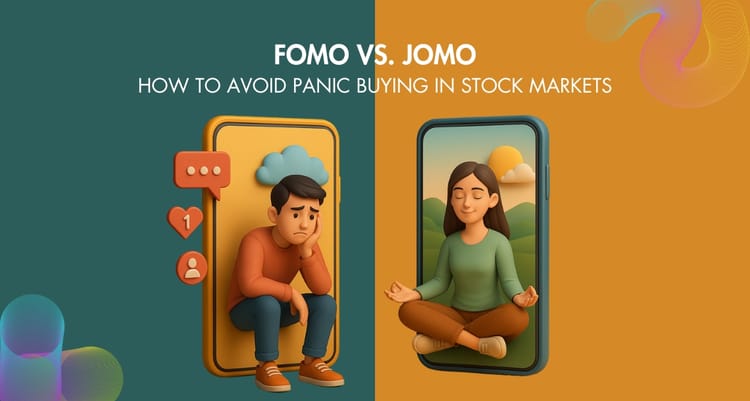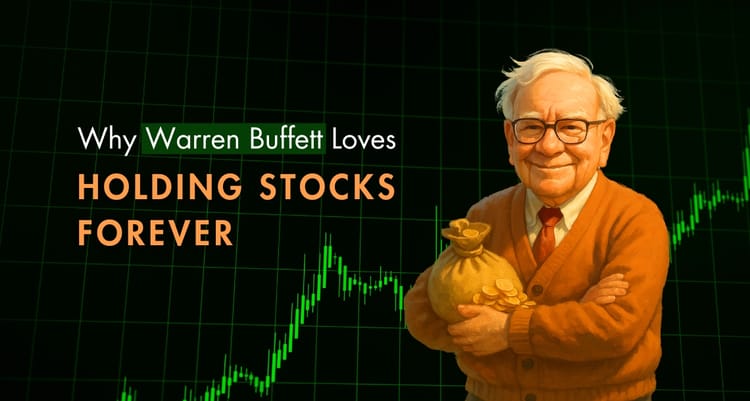Value or Growth Investing: Discovering Your Ideal Investment Style!

When it comes to investing, there are various strategies to consider, each with its unique approach and philosophy. Two prominent and contrasting strategies are Value Investing and Growth Investing. These approaches have been popularized by legendary investors like Warren Buffett and Peter Lynch, respectively. In this blog, we will explore the fundamental principles of Value Investing and Growth Investing, understand their differences, and help you determine which strategy aligns best with your investment goals and risk tolerance.
Value Investing: Seeking Undervalued Gems
Value Investing is a strategy based on the principle of buying undervalued stocks that are trading below their intrinsic or "true" value. Investors employing this approach look for stocks that appear cheap relative to their fundamental metrics, such as Price-to-Earnings (P/E) ratio, Price-to-Book (P/B) ratio, and Dividend Yield. The goal is to identify quality companies that are temporarily out of favor with the market and have the potential for long-term growth.
Key Characteristics of Value Investing:
Emphasis on Fundamental Analysis: Value investors thoroughly analyze a company's financial health, earnings potential, and competitive advantages to determine its intrinsic value.
- Focus on Dividends and Income: Many value stocks pay regular dividends, making them attractive to income-seeking investors.
- Patience and Contrarian Approach: Value investors are patient and willing to hold onto undervalued stocks until their true worth is recognized by the market.
Growth Investing: Betting on Future Potential
Growth Investing, on the other hand, is a strategy centered on identifying companies with high growth potential. Investors following this approach seek out companies that are expected to experience significant revenue and earnings growth in the future, even if their current valuations seem high based on traditional metrics.
Key Characteristics of Growth Investing:
- Focus on Earnings Growth: Growth investors prioritize companies with a history of strong earnings growth and high potential for future expansion.
- Innovation and Disruption: Many growth stocks come from innovative sectors or disruptive industries, making them attractive to investors expecting rapid market share gains.
- High Valuations: Growth stocks often trade at high Price-to-Earnings (P/E) ratios due to investors' confidence in their future earnings growth.
Which Strategy is Right for You?
- Choosing between Value Investing and Growth Investing depends on your investment objectives, risk tolerance, and time horizon.
- Value Investing suits patient investors who seek stability, regular income, and are comfortable holding undervalued stocks for the long term.
- Growth Investing appeals to those who are willing to take on higher risk for the potential of above-average returns, believe in the companies' growth prospects, and have a longer investment horizon.
- Some investors may opt for a blended approach, combining elements of both strategies to diversify their portfolio and capture opportunities in different market conditions.
Ultimately, the decision between Value Investing and Growth Investing comes down to your individual preferences, financial goals, and risk appetite. Both strategies have proven successful over time, and renowned investors have achieved exceptional results using each approach. Remember, diversification and thorough research are essential in any investment strategy. By understanding the principles of Value Investing and Growth Investing, you can make informed decisions that align with your unique investment style and objectives.
Frequently Asked Questions (FAQ)
1. What is Value Investing?
Value Investing is a strategy that involves buying undervalued stocks trading below their intrinsic value. This approach focuses on fundamental analysis to identify quality companies that are temporarily out of favor with the market.
2. What is Growth Investing?
Growth Investing is a strategy centered on identifying companies with high growth potential. Investors seek out companies expected to experience significant revenue and earnings growth in the future, even if their current valuations are high.
3. What are the key characteristics of Value Investing?
- Emphasis on Fundamental Analysis: Thoroughly analyzing a company's financial health, earnings potential, and competitive advantages.
- Focus on Dividends and Income: Many value stocks pay regular dividends.
- Patience and Contrarian Approach: Holding onto undervalued stocks until the market recognizes their true worth.
4. What are the key characteristics of Growth Investing?
- Focus on Earnings Growth: Prioritizing companies with strong earnings growth and high potential for future expansion.
- Innovation and Disruption: Investing in companies from innovative sectors or disruptive industries.
- High Valuations: Growth stocks often trade at high Price-to-Earnings (P/E) ratios due to expected future earnings growth.
5. How do I decide which investment strategy is right for me?
Choosing between Value and Growth Investing depends on your investment objectives, risk tolerance, and time horizon:
- Value Investing: Suits patient investors seeking stability, regular income, and willing to hold undervalued stocks for the long term.
- Growth Investing: Appeals to those willing to take on higher risk for potential above-average returns, believe in companies' growth prospects, and have a longer investment horizon.
6. Can I combine both Value and Growth Investing strategies?
Yes, some investors opt for a blended approach, combining elements of both strategies to diversify their portfolio and capture opportunities in different market conditions.
7. What metrics do Value Investors look at?
Value investors typically look at metrics such as the Price-to-Earnings (P/E) ratio, Price-to-Book (P/B) ratio, and Dividend Yield to identify undervalued stocks.
8. Why do Growth Investors focus on high P/E ratios?
Growth investors focus on high P/E ratios because they expect significant future earnings growth, which justifies the higher current valuation.
9. What sectors do Growth Investors typically invest in?
Growth investors often invest in innovative sectors or disruptive industries, such as technology, biotechnology, and renewable energy, where companies are expected to experience rapid market share gains.
10. How important is diversification in these investment strategies?
Diversification is crucial in any investment strategy. It helps reduce risk by spreading investments across various assets, industries, and geographic regions.
11. Is one strategy better than the other?
There is no one-size-fits-all answer. Both strategies have proven successful over time. The best strategy depends on your individual preferences, financial goals, and risk appetite.
12. What is the role of research in Value and Growth Investing?
Thorough research is essential in both strategies. For Value Investing, research helps identify undervalued stocks with solid fundamentals. For Growth Investing, it helps identify companies with strong growth potential and innovative business models.






Member discussion